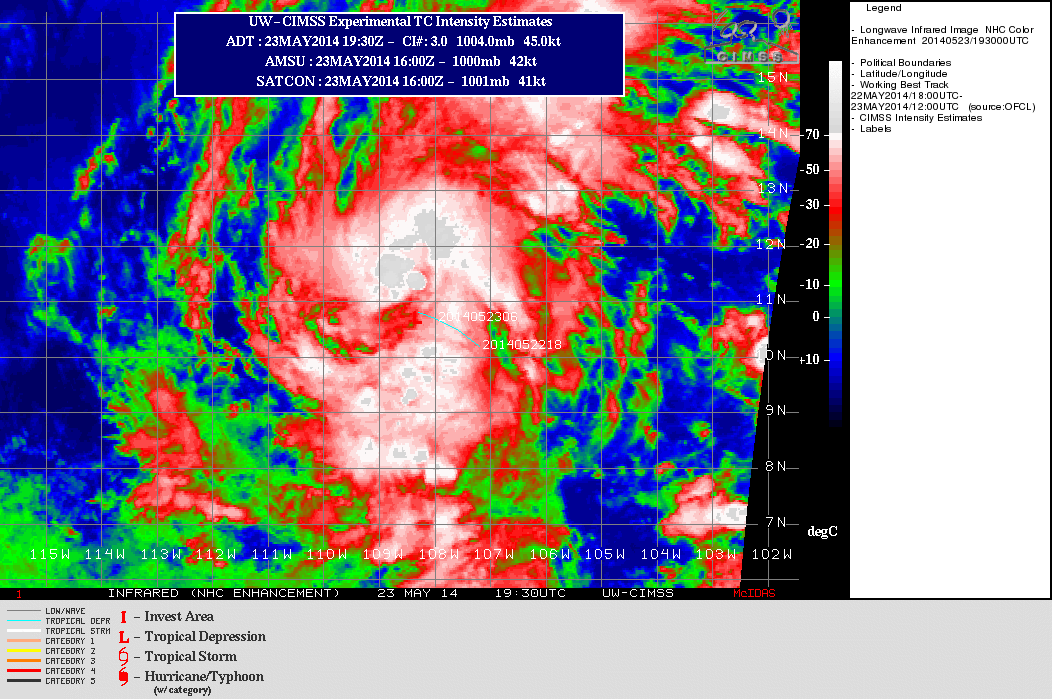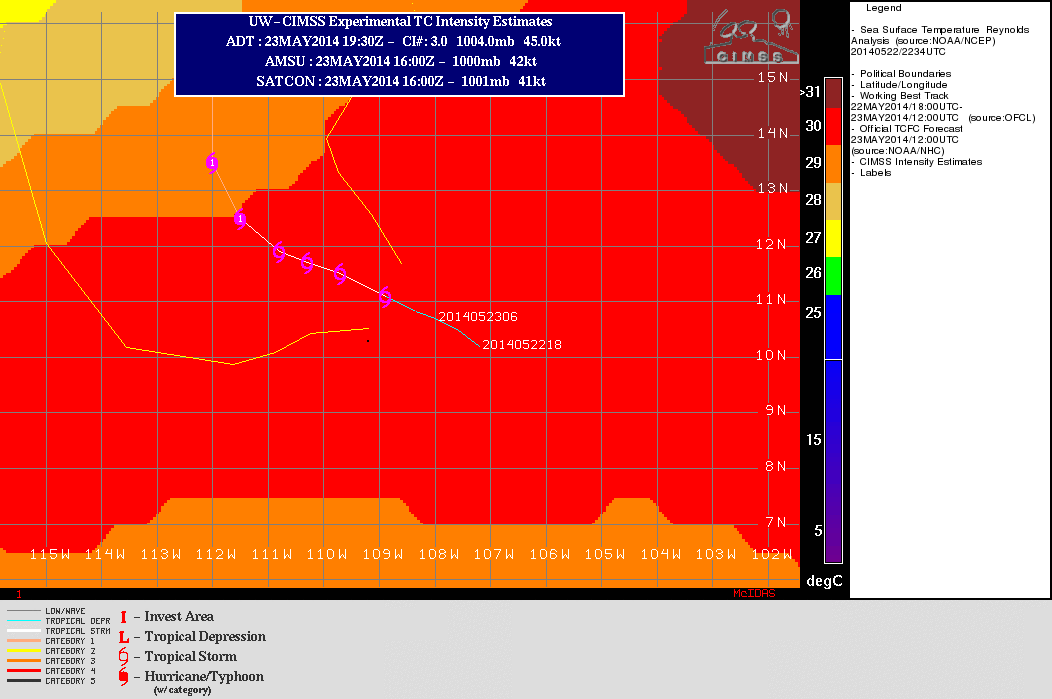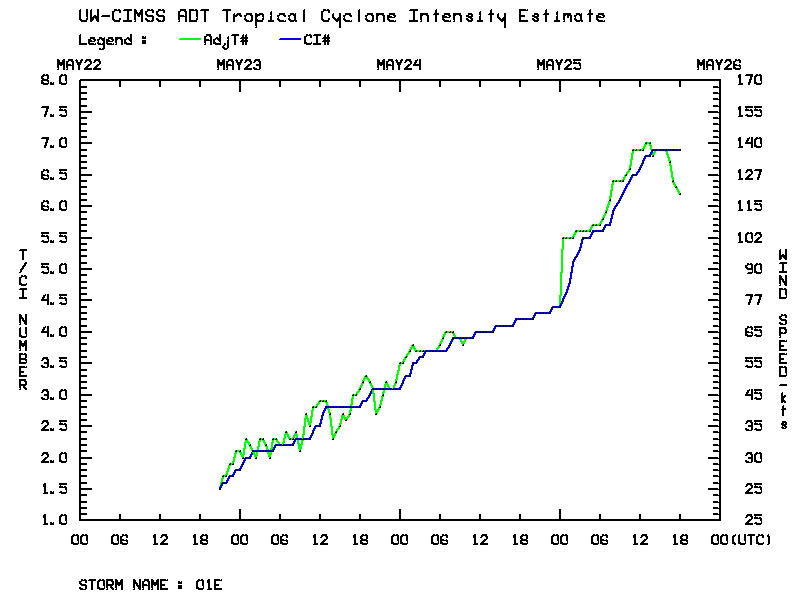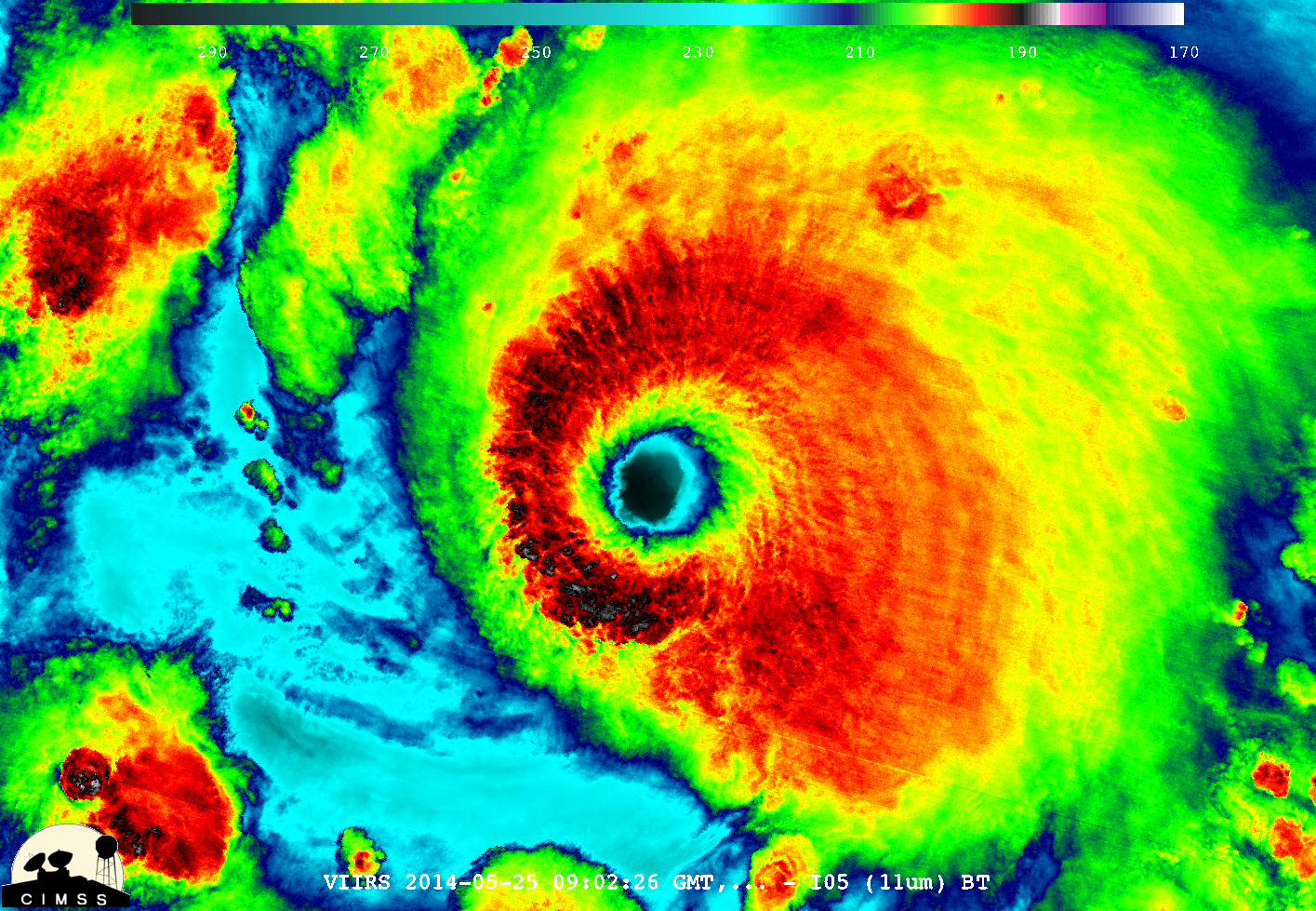Hurricane Amanda in the East Pacific Ocean
Amanda became the first tropical storm of the 2014 East Pacific Basin season on 23 May 2014. 4-km resolution GOES-15 (GOES-West) 10.7 µm IR channel images from the CIMSS Tropical Cyclones site (above; click image to play animation) an increasing amount of organization to the convection associated with Amanda.
A similar trend was seen in 1-km resolution GOES-15 0.63 µm visible images (below; click image to play animation).
Given that Amanda was in an environment of low deep layer wind shear (above) and over warm sea surface temperatures (below), intensification to Category 1 hurricane intensity was forecast.
===== 24 May Update =====
McIDAS images of GOES-15 0.63 µm visible channel data (above; click image to play animation) and 10.7 µm IR channel images (below; click image to play animation) showed that Amanda began to display an eye signature as it intensified to hurricane strength later in the day on 24 May. Amanda became the second earliest major hurricane on record in the East Pacific basin.
===== 25 May Update =====
In the early hours of 25 May UTC, Amanda underwent a period of rapid intensification, reaching Category 4 intensity around 12 UTC. This trend of rapid intensification is very evident on a plot of the CIMSS Automated Dvorak Technique (above). According to a National Hurricane Center discussion, Amanda became the strongest May hurricane on record over the East Pacific basin in the satellite era.
Hurricane Amanda exhibited a small eye, which was easily seen in 0.63 µm visible channel imagery (below; click image to play animation) from GOES-15 (GOES-West), GOES-14, and GOES-13 (GOES-East). The small-diameter eye was also apparent in DMSP SSMIS 85 GHz microwave imagery at 01:43 UTC and 15:00 UTC.
GOES-15 (left), GOES-14 (center), and GOES-13 (right) 0.63 µm visible channel images [click to play animation]
===== 26 May Update =====
GOES-15 10.7 um IR channel images spanning the 24 May – 26 May period (above; click image to play animation; also available as an MP4 movie file) showed the development and evolution of the eye of Hurricane Amanda. Note that there were several time intervals when the IR cloud-top brightness temperature was colder than -80 C (violet color enhancement).







